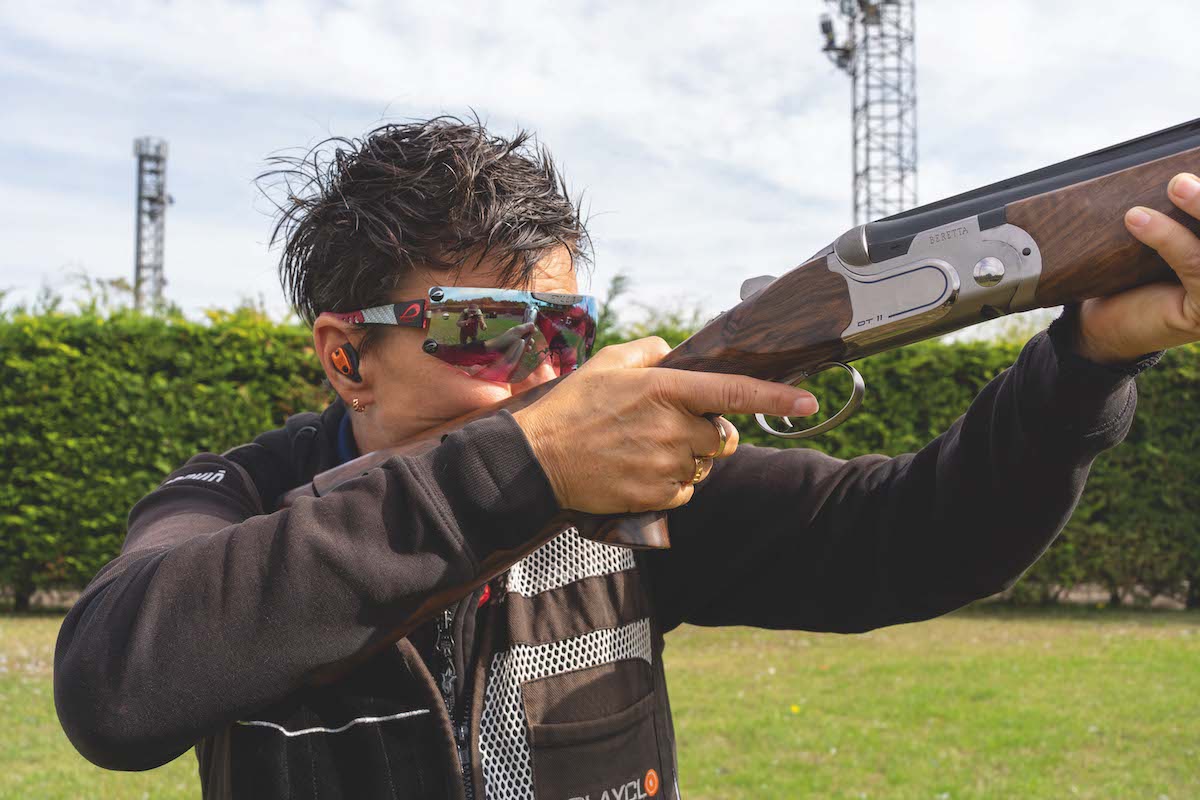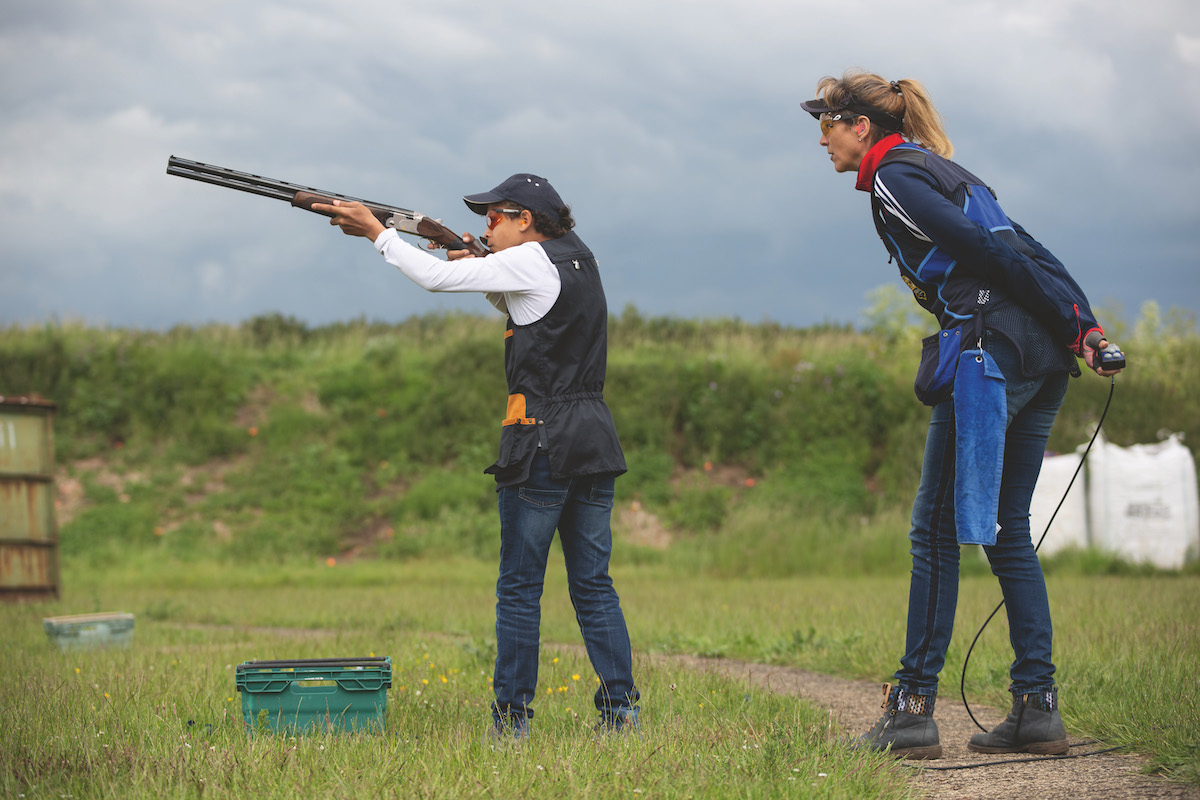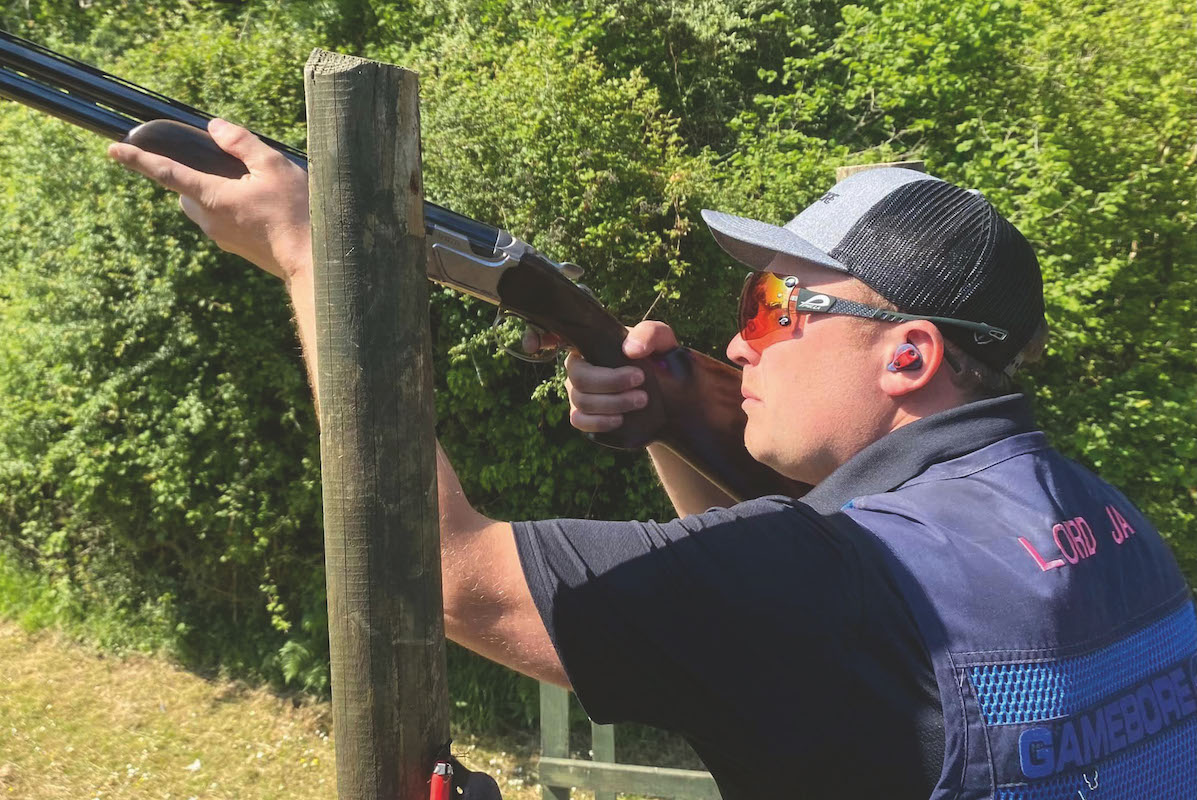Helice shooting – what it is and how to start
To excel in this sport you must give the target a good belting, says Paul Quagliana
Helice shooting, formerly referred to as ZZ, is relatively unknown in the UK, which is a pity and there is only a handful of grounds that have it on offer.

Examples of different styles of Helice targets
Helice shooting in Dorset
I was excited to learn that Dorset’s Purbeck Shooting School recently had a helice shooting layout installed and run by Rob and Liz Mulliner. Helice, which is French for propeller, mimics the unpredictable flight of a real bird and is probably one of the most interesting and unusual target disciplines you can try your hand at.
In a nutshell, the Helice target is a plastic propeller containing a clay pigeon-shaped plastic centre. The centre of the target is made from a tough plastic that does not shatter. The outer propeller, or ‘wing,’ is made from a much more brittle plastic that shatters when hit. However, the centre, which can vary in size, must be completely detached from the propeller to count as a hit, and it must fall inside a designated area.

Elizabeth Mulliner on the Helice layout at the Purbeck Shooting School
Tight chokes
To ensure there are no ‘runners’, and considering the longer shooting distances involved, a gun with tight chokes is really a must. In layman’s terms, the target needs a good belting to ensure the centre is detached. If you possess a Trap gun, you are – in theory at least – already on your way to being a Helice champion. (Read our guide to trap guns and trap shooting.)
Where Helice differs from clay shooting is that the shooter must first call ‘ready’ before preparing for their shot and calling ‘pull’. There are five traps that spin the helice and the shooter is unaware from which trap the helice will be launched. It is quite a sight to see the helice rising from the trap and go whirring away.
I met Rob and Liz, along with Malcolm Grant, at the school. They have all shot for Team GB. Joining them was Alex Smith, who intends to blaze his own trail to glory in the Helice world. I was given the opportunity for a few shots and relished the chance to have a go.

The helice targets can be expensive but it is something that’s worth trying
After smashing six helice targets I was on cloud nine, but six targets hardly makes me an expert. But I do have a few tips for the novice Helice shooter that I hope may be useful. When the helice is launched, the back of the trap drops down. It can be tempting to look for this as it appears to be a giveaway as to which trap the helice will be launched from. However, it is fast.
By the time you have spotted the back of the trap dropping the target is already on its way. So I adopted a tactic that an old Austrian big game hunter once gave me. He said: “When you are sitting in a high seat, for example, don’t keep bobbing your head backwards and forwards looking for your quarry. Just sit back, keep still and don’t focus on anything. If something moves, even in your peripheral vision, you will spot the movement”.
So I made my hold point just above the central trap, focused on nothing in particular and, after announcing ‘ready’, called ‘pull’ and waited for the target to appear. I found that shooting fast and instinctively worked for me – see the target, swing and shoot.

A hit! And the short pale white streaks are the shotgun pellets
If you grew up with shooting rabbits bolted by ferrets or were lucky enough to do some walked-up snipe shooting, Helice may seem quite natural. Likewise, if you are a trap shooter, again you should slip into Helice quite easily, though whether you will hit them all is another issue.
For anyone who is likely to be doing some walked-up shooting – whether in field trials in lowland areas or on the moors – I do believe Helice could be an excellent way of sharpening up your reflexes.

Malcolm Grant, who has shot for Team GB, lines up on a helice
A discipline that should be tried
I thoroughly enjoyed the experience and I believe that Helice is one discipline that should be tried – if nothing else for its uniqueness. Helice targets are relatively expensive and for some shooters the cost may be off-putting, which could well be a stumbling block. If sponsorship and prizes could be procured, it might prove more popular. I would love to see the sport continuing to grow.
At the Purbeck Shooting School, the layout is dual-purpose and can be used for clays as well. This may be an incentive for other grounds to give it a try because space is often an issue at any shooting ground, so doubling up on disciplines can solve this.
Helice may seem costly, however, when you consider the cost in clays and ammunition. If you shoot 100-plus clays perhaps Helice starts to appear more affordable. Ultimately, it depends on your personal tastes and ambitions as a shooter. For me, my teenage days of shooting hundreds of rounds a week at a variety of disciplines while lugging bags of cartridges around are largely over – my father’s wallet was larger than mine. I simply don’t have the cash, time or inclination.
However, the thought of leisurely shooting a few Helice targets, swapping a few stories, then perhaps finishing off with a few clays on the myriad targets that shooting grounds such as Purbeck offers to keep my eye in, is an attractive one.








